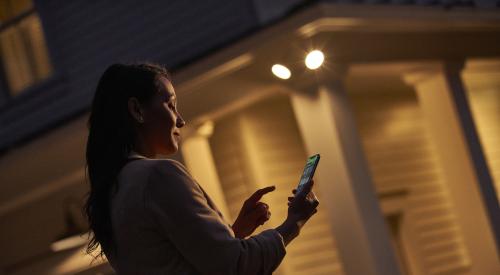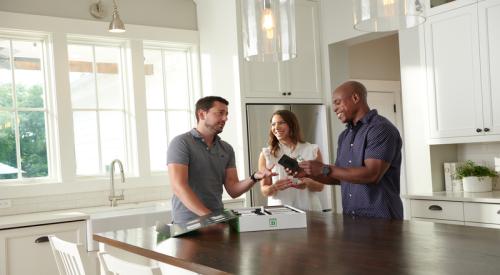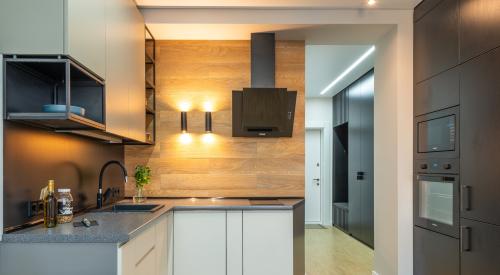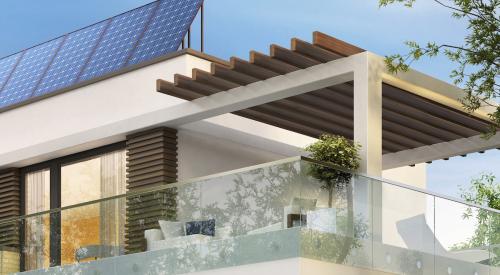Over the past 18 months, homes have become sanctuaries from an ever-changing world. It’s somewhere we experienced every aspect of our lives — work, exercise, home-schooling, entertainment, and everything else in between.
Even as public life returns, we have come to expect a lot more from our dwellings — a carefully calibrated balance between productivity and relaxation. Home needs to provide the quiet and calmness for important work meetings, sustain and enable the excitement that comes with get-togethers with family and friends.
We want our homes to keep us connected with the wider world, while allowing us to disconnect when we need to recharge our ‘batteries’. It’s also the place where we must be empowered to live a smart, sustainable and net zero life.
Sanctuaries within urban living
The reality is that 56.2% of the global population now lives in cities — and that trend is likely to continue. Some 70% of Europeans, 81.2% of Latin America and the Caribbean, and 83.6% of North Americans already live in urban areas. But access to work, the attractions of leisure, and convenient public transport often come with trade-offs such as exposure to pollution — whether that be of air, water, or excessive heat and noise.
Increasingly, our homes start playing an important role when it comes to urban living, safeguarding not only our physical but also our mental wellbeing. This is exactly where modern technology comes to the rescue, helping transform our residences into smart and sustainable homes of the future. Creating better experiences for residents as well as delivering better outcomes for the planet, we have the potential to make homes sustainable, more human-centric and eventually net zero, street by street, city by city.
Those living in less populated areas, closer to nature, will also benefit from smart home technology that makes our dwellings more resilient, more connected and sustainable.
Here is how I see our homes evolving to fulfill our changing aspirations and needs:
Homes must become safe havens for residents
Since last year we have trusted our homes to keep us safe and isolated from the health hazard of the pandemic. The access control systems and door entry cameras helped us decide which visitor was granted access and who was denied. Our homes must now become true resilient and sustainable structures inside and out, designed to protect the physical and mental health and wellbeing of the occupants, particularly in the post-pandemic world.
Starting with the basics, this means uninterrupted power, running our digital devices, home appliances, heating and cooling, safety and security systems, and medical devices – all of which are becoming increasingly important as unpredictable weather patterns continue to threaten the power grid reliability, and emergency off-grid power storage becomes more affordable.
This also comes down to electrical safety. More and more devices — including EVs — are being plugged into our sockets. Old homes are at higher risk as they were not built to accommodate so many appliances. For instance in Europe half of the residences were built before 1970. Modern technology can detect anomalies in current fluctuations, helping to avoid an overloaded network and reducing the risk of electrical fires.
Brought together in a smart and sustainable home setting, designed around you, these solutions can create a sense of safety that offers residents peace of mind and the ability to minimize the feelings of stress and anxiety — whether we are working from home or sleeping in.
Homes need to be flexible
Our home design often fits our personalities and nurtures our habits. Like their residents, no two homes are the same, since everyone has their own idea of what a living space should be. Yet residents shouldn’t have to choose between efficiency and comfort — our homes need to be optimal in terms of function and feel. As our lives and tastes evolve, our homes must evolve in harmony with our needs.
This is where smart and sustainable home technology comes in. It gives us the opportunity to flex our energy needs while ensuring that our power-hungry devices — including our electric cars and scooters — aren’t all charging at the same time and that their charging capacity never exceeds the limit of the utility contract or ends up giving you a bill shock.
Smart home technology, such as Wiser, can also calculate the best time and tariff for all energy needs of your home through the power of data, AI and the tariff rates offered by your energy provider. This allows you to make sure you are getting as much flexibility as possible within the realities of your home and life. This is how we want to feel more empowered and more in control.
Homes need to be sustainable
More and more of us want to reduce our environmental footprint. Diminishing our home’s impact on the planet goes a long way to achieving this. In particular, it is what the next generation of homeowners want: they’re spending more time searching for sustainable houses, and are willing to pay a green premium on accommodation that meets their exacting eco-standards.
Unfortunately, not all homes were created equal, and some aren’t quite as energy efficient as they could be. Thankfully, most existing homes can be digitally retrofitted with intuitive easy to install energy management solutions. Homeowners can also generate renewable energy, use it at maximum capacity when the sun is shining while storing excess power for emergency use. Equally, smart and sustainable home technology allows us to make homes more energy efficient, minimizing energy waste.
Smart solutions also help us be at peace with ourselves and live at peace with nature — knowing that smart home tech is there to do the heavy lifting and monitoring to ensure our homes are emitting as little CO2 as possible, eventually becoming net zero.
Zeroing in on sustainable urban living
As we advance further into the decade, it is vital that our cities become cleaner, greener, and more biodiverse. What’s more, tech solutions developed to achieve this work must work in synchrony, not siloes.
Homes are at the heart of this transformation. Far more than places of mere habitation, they must evolve to encompass smart and sustainable net zero living, forming the basis or our health and wellbeing — advancing that of the planet in the process. After all, this planet is the only home we’ve got.
Know more about what we can do together to achieve net zero homes.
About the Author
Jai Thampi, Senior VP Strategy & Innovation at Schneider Electric’s Home & Distribution division, is an established thought leader in strategy, digital transformation and corporate innovation in B2C and B2B domains. An international keynote, and twice recipient of the 'Most Impactful Smart Cities Leader' global award in 2020 and 2019, Jai also serves as advisor on the board of tech startups in Asia, and has previously held leaderships roles in leading multinationals like Cisco, Electrolux, Philips and Belkin.















